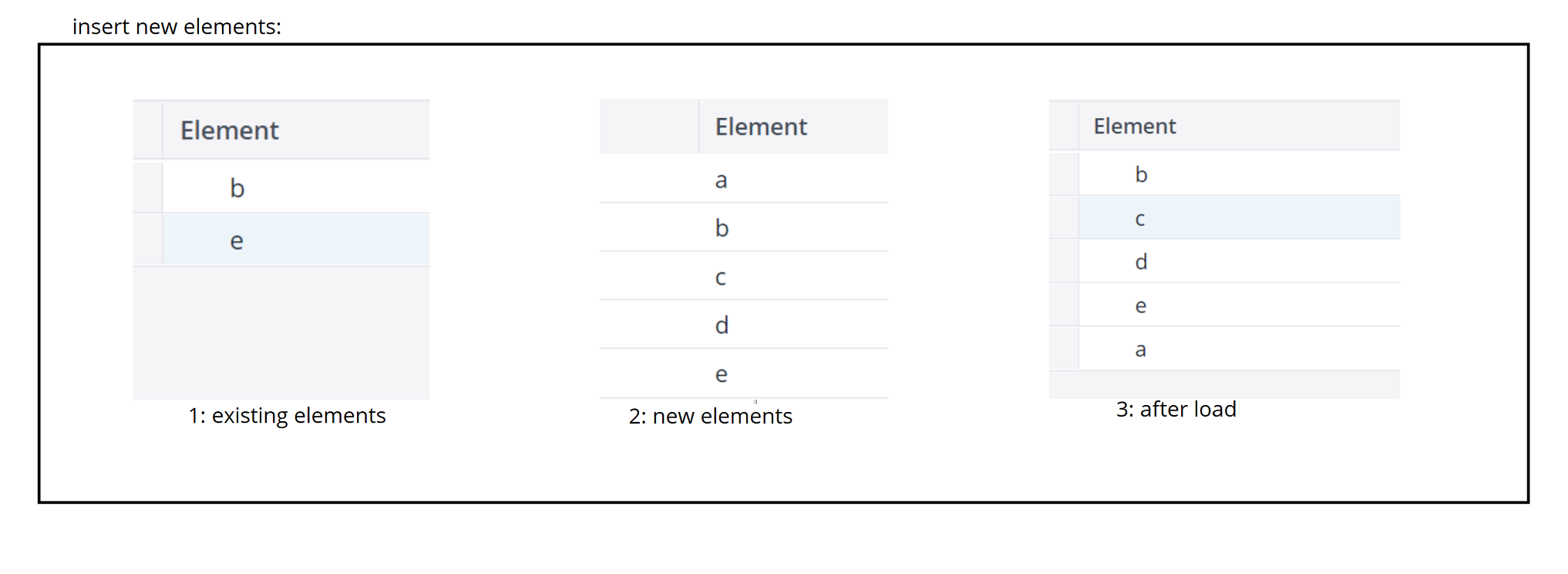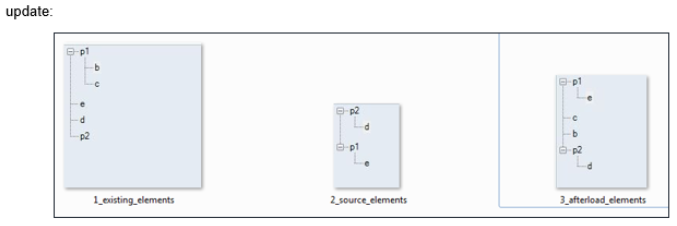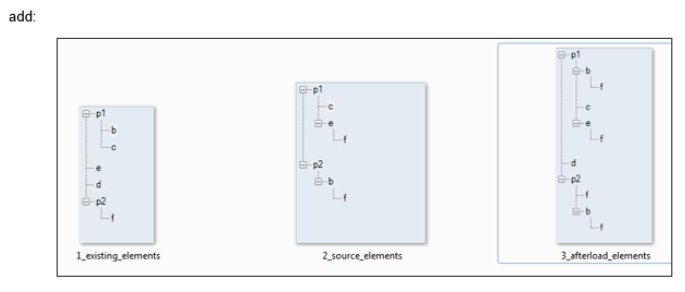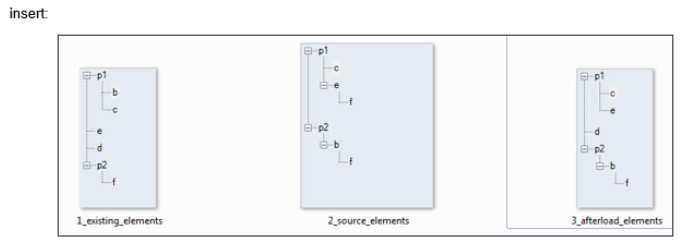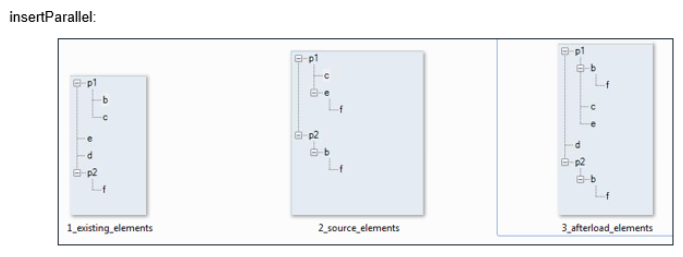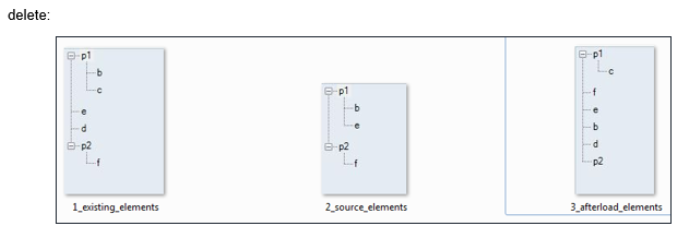Dimension Load
The Dimension Load writes data into a dimension in the In-Memory DB (OLAP). The Dimension Load dialog consists of different sections of settings, where you can:
-
Describe your Dimension Load.
-
Define the data source, target connection, target dimension, elements mode, consolidations mode, and attribute mode.
-
Define the dimension type and generate a default subset. Also, you can choose to add virtual dimensions to the load.
The load is formed in the following three consecutive steps, which are executed when they have been activated and the appropriate data is available in the data source:
- Load elements: dimension elements are loaded (flat)
- Load consolidations: hierarchical relationships between the dimension elements are loaded
- Load attributes: attribute values for the elements are loaded
The settings for Dimension Loads are described in the table below.
Settings
| Data source
|
The source is an extract or transform containing the dimension data. If it is a tree, the dimension can be created including consolidations and attributes. If not, only flat elements and attributes can be created. In this case, the first column has to contain the element name and the other columns may contain attributes.
|
| Target connection
|
Connection to a Jedox OLAP Server. |
| Target dimension
|
Name of the OLAP dimension. If the dimension is not present, it will be created during the load. |
| Elements mode
|
This field is required.
| create |
The dimension and referencing cube are deleted, and the dimension is created anew. Deletes existing elements and creates new ones in the order of the source. If the advanced option Generate default subsets is selected, then predefined subsets will also be added to newly created dimensions. |
| update |
Existing elements that are not in the data source are deleted, and new elements are created. The result is nearly the same as that of "create"; only the order of elements is different. New elements are added at the end of the dimension. If the advanced option Generate default subsets is selected, then predefined subsets will also be added to newly created dimensions. |
| add |
Adds new elements at the end of the dimension. The elements existing in the dimension before the add operation are not deleted. |
| insert |
Adds new elements in the order of the source. The elements existing in the dimension before the insert operation are not deleted. If the advanced option Generate default subsets is selected, then predefined subsets will also be added to newly created dimensions. Note: new elements are inserted behind the preceding, already existing source elements. New elements that are on the first positions in the source, before any existing elements, are inserted at the end. The ordering of already existing elements is not changed. |
| delete |
Deletes all transferred elements. Elements of the data source are deleted in the dimension, all other elements remain. |
| inactive |
Elements will not be loaded. |
|
| Consolidations mode
|
This field is required.| update | All existing consolidations are deleted, and transferred consolidations are created. | | add | Adds new consolidations. All existing consolidations remain. | | insert | Adds new consolidations. For all new consolidations, existing consolidations with the same child node to other parent nodes are deleted. The resulting dimension has only one parent for each node. | | insertParallel | Adds new consolidations. Existing consolidations with the same child node to other parent nodes in the same hierarchy (i.e. under the same root node) are deleted. The resulting dimension has only one parent for each node in every parallel hierarchy. | | insertParallelRetain | Adds new consolidations, almost the same as insertParallel. However, there is a difference between the precedence of the consolidations:
In the insertParallel, if a child element already has multiple parents before the Dimension Load, the new consolidations of the source have precedence (i.e., they will be in the resulting dimension after the load).
In the insertParallelRetain, if a child element already has multiple parents before the Dimension Load, the already existing consolidations of the dimensions have precedence.
| | delete | Deletes all transferred consolidations. | | inactive | Consolidations will not be loaded. |
|
| Attributes mode
|
This field is required.| create | Deletes existing attributes and creates new ones in the order of the source. | | update | Existing attributes that are not in the data source are deleted, and new attributes are created. This option writes all attribute values in the source. | | add | New attribute values are created. All existing values are overwritten if the new value is not empty/0 for string/numeric attributes. | | insert | New attribute values are created. All existing values are overwritten. | | delete | Deletes all transferred attributes. Attributes in the data source are deleted in the dimension, and all other elements remain. | | inactive | Attributes will not be loaded. |
|
In a Dimension Load, when an Elements mode is selected and the fields for Consolidations mode and Attributes mode are empty, those fields are automatically populated with the default load modes. For Elements modes update, add, insert, delete, and inactive, the Consolidations and Attributes modes are populated with the same mode as Elements. For Elements mode create, Consolidations mode is populated with update and Attributes mode is updated with create.
| Dimension type
|
Select a dimension type (or no type) for a dimension that is created during the load. |
| Generate default subsets
|
When checked, creates predefined subsets when a dimension is created during the load. |
Updated July 21, 2025





